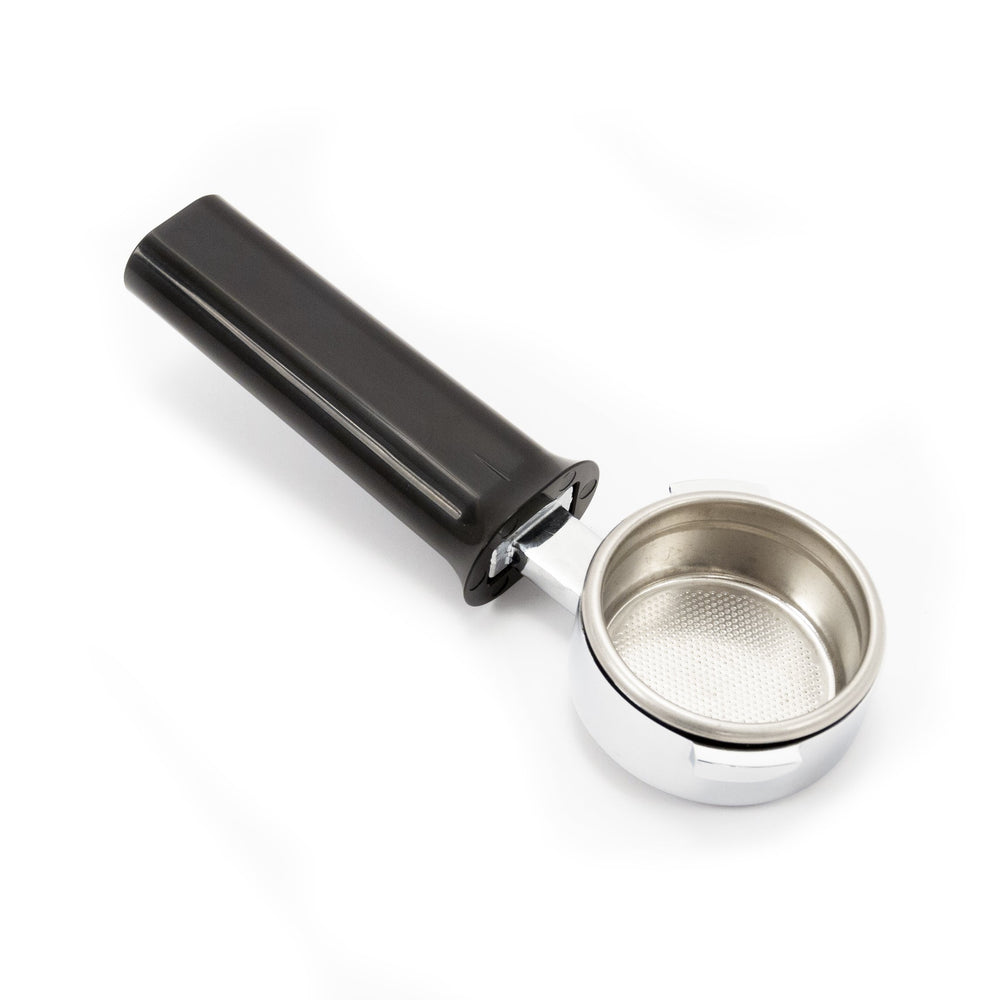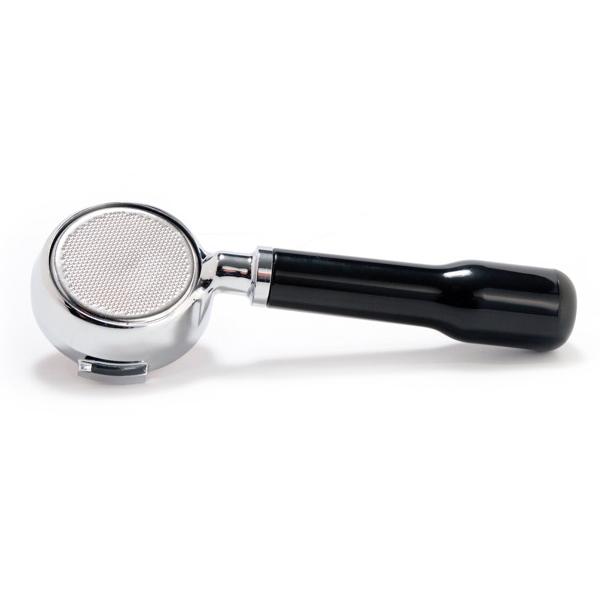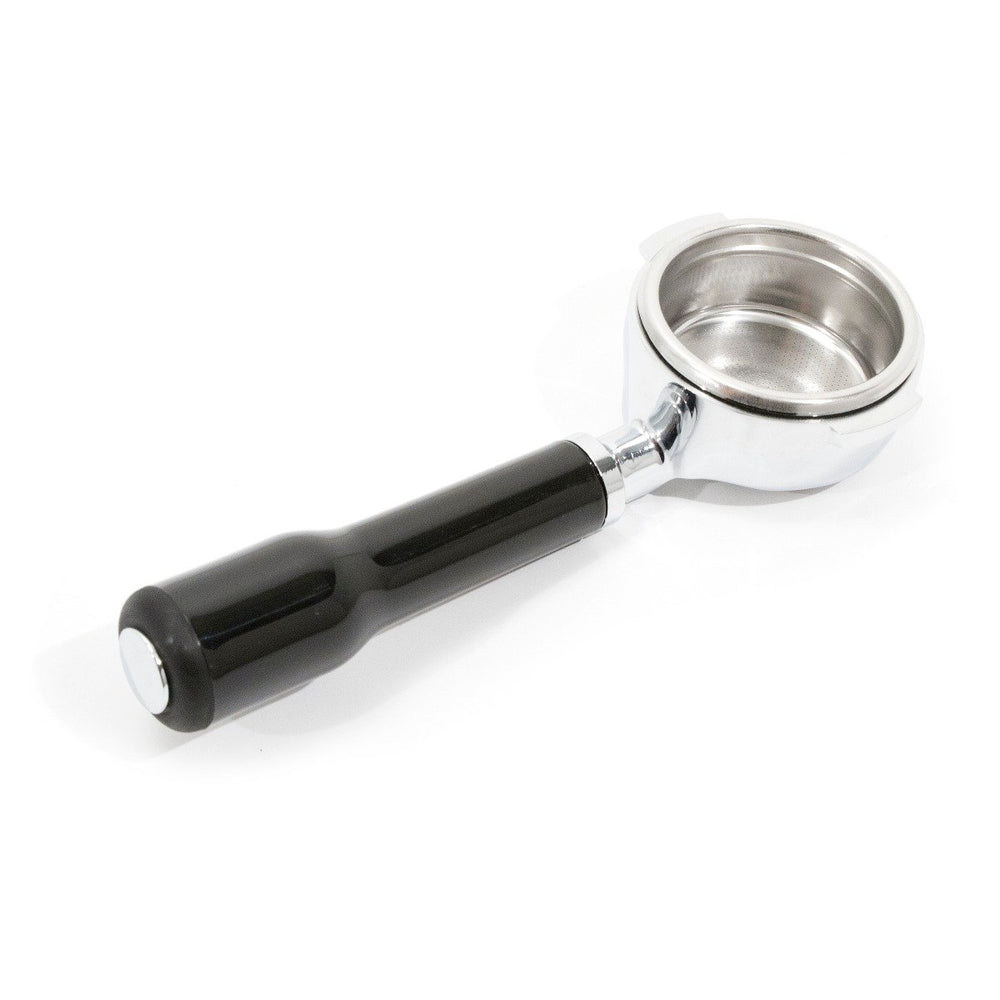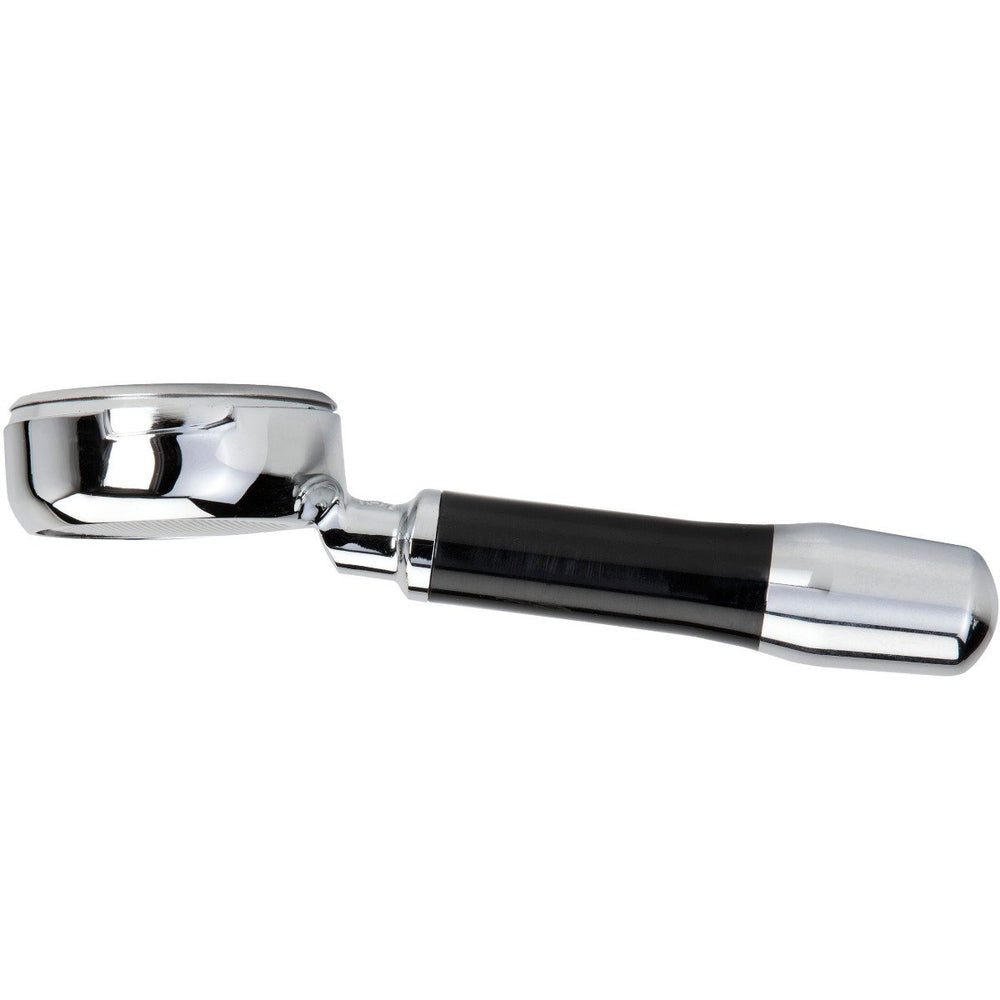The Complete Guide to Coffee Grinders
Updated for 2021. It’s entirely possible that you’ve gone your entire life brewing and drinking coffee without a coffee grinder. While that may bring tears to our eyes here at WLL HQ, for some, pre-ground, or even instant coffee is all they’ve ever known. In light of this harrowing detail, we have created a guide, a guide on everything you need to know about coffee grinders. If this is not a journey you wish to embark upon, at the very least take this to heart. Coffee tastes best when ground fresh.
What is the Best Coffee Grinder?
A common theme relating to coffee and coffee accessories is the search for the best. Grinders are no exception to this rule, but it’s not a topic where you can simply identify one grinder as the best, and the rest as runners up. The desire for the best grinder obviously stems from the desire for the best coffee, which, as we discuss in our complete guide to coffee and espresso is not so easily identified.

The Complete Guide to Coffee and Espresso
Because coffee is so widely varied in how it is prepared, coffee grinders need to be just as flexible in their design to accommodate. With that in mind, there are a few best ofs that we can safely recommend, albeit in more specific categories:
Top 5 Coffee Grinders
Best Coffee Grinder - Baratza Encore
“...For the money and for home use, this grinder can't be beat. It grinds evenly at different settings, is easy to maintain and has an ample capacity for home use...” - Ellen W.

$159.99
Best All-Purpose Coffee Grinder - Baratza Sette 270Wi
“...What an upgrade! Just getting into home espresso and this thing is a marvel. Grind to weight is very close to perfect and grind size is consistent. I am doing pour over using the coarse settings and espresso closer to the finest settings...” - Paul K.
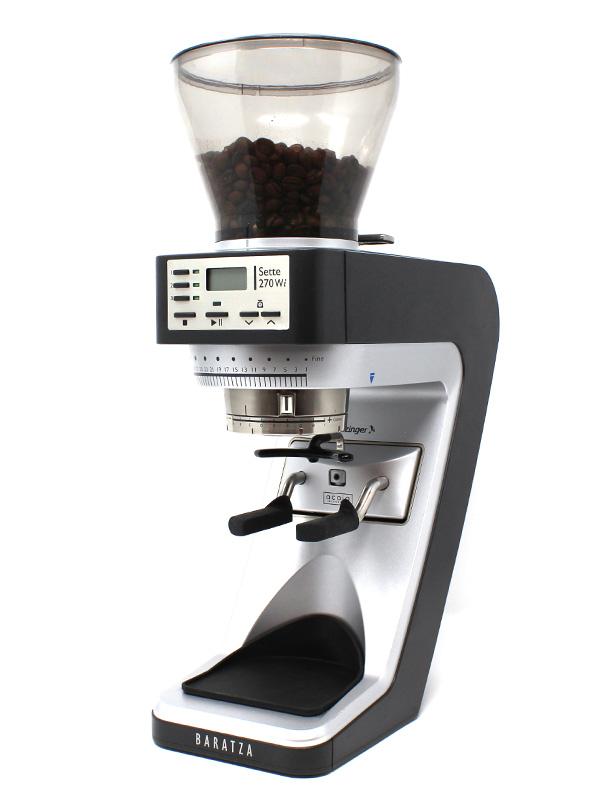
$799.00
Best Espresso Grinder - Ceado E37S
“...Totally worth it. Having spent hundreds on other grinders and always missing the mark I bit the bullet and got this guy. It’s built like a tank, makes angelically fluffy consistent grinds with no clumps and keeps it’s setting like a boss...” - Robert V.
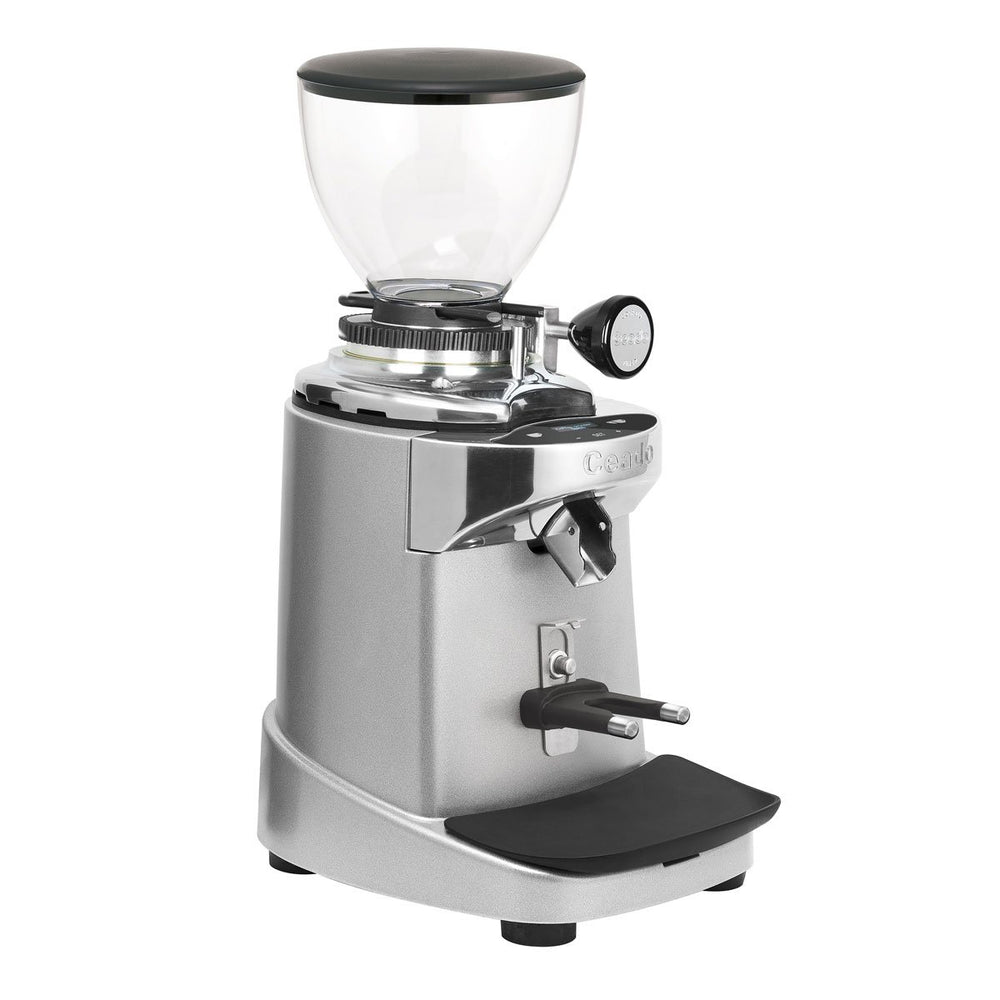
$2,300.00
Best Value Coffee Grinder - Eureka Mignon Specialita 16cr in Chrome
“...I kept hearing how quiet it was, how well it was built, and it was beautiful so I pulled the trigger! I've had it for one week now and I'm absolutely in love with this grinder...” - Mike M.
Best Single-Dose Coffee Grinder - Ceado E37SD
“...It runs as quiet as a mouse and gets nearly zero retention. Easy to keep clean. It is a perfect fit for my use…” - Thomas H.
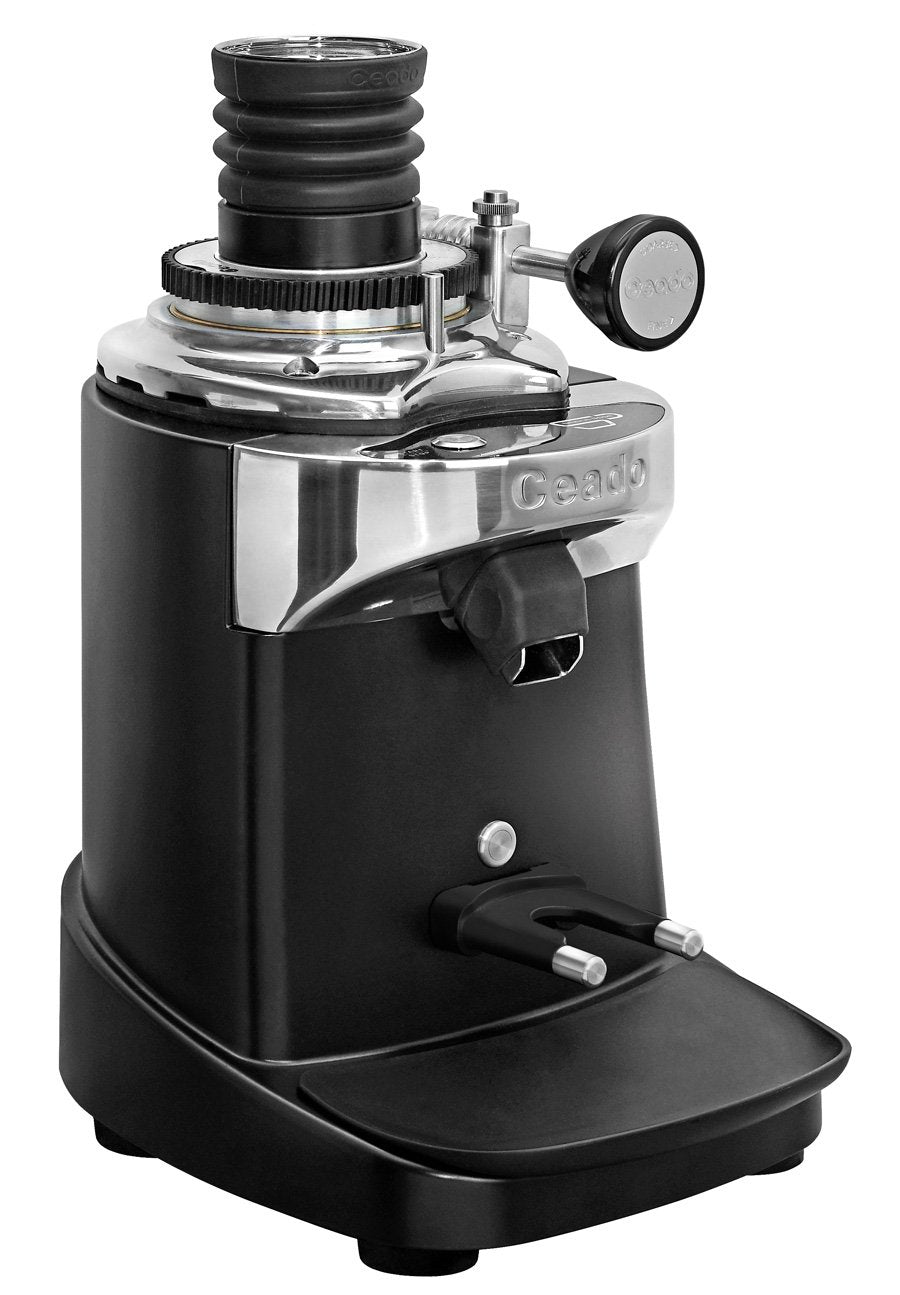
$3,305.00
When it comes to grinding, not all problems are nails and so, not all grinders need to be hammers. Our suggestions above are some of our most popular representatives of our various grinder categories and a good place to start. If you still want to know more, check out our guide on choosing a grinder for beginners. Despite their differences, something that each of our recommendations has in common is that each of them uses a pair of specifically engineered burrs in order to crush roasted coffee beans into suitable sizes and shapes for brewing coffee, which leads us into our next topic.
Burr Coffee Grinders

People are compelled to test boundaries, to push the limits of convention, and to experiment. One of the most fortunate things about coffee brewing is that it’s not a recent thing. People have been developing and refining methodologies for a long time, and one of the cornerstones of coffee brewing is the importance of a quality burr coffee grinder to the overall results in your cup. You might be wondering “why exactly is that?” In order to answer that question, we have to understand a bit more about brewing and extraction so that we can properly understand a grinder’s role in the process.
In the world of modern coffee, there is currently no better way to efficiently and uniformly grind coffee for brewing than with a burr grinder. Burr coffee grinders are specifically designed to grind coffee, not spices, not rice, not cocoa, you get the idea. They are engineered to produce uniformly sized grinds, with the option to adjust for finer or coarser results. People sometimes ask “how to grind coffee without a coffee grinder” and the answer is simply that you can’t. You can crush beans, chop them, pulverize them, but only a grinder can effectively grind coffee. We live in a world of specific tools that serve specific purposes. Take this brush for instance:
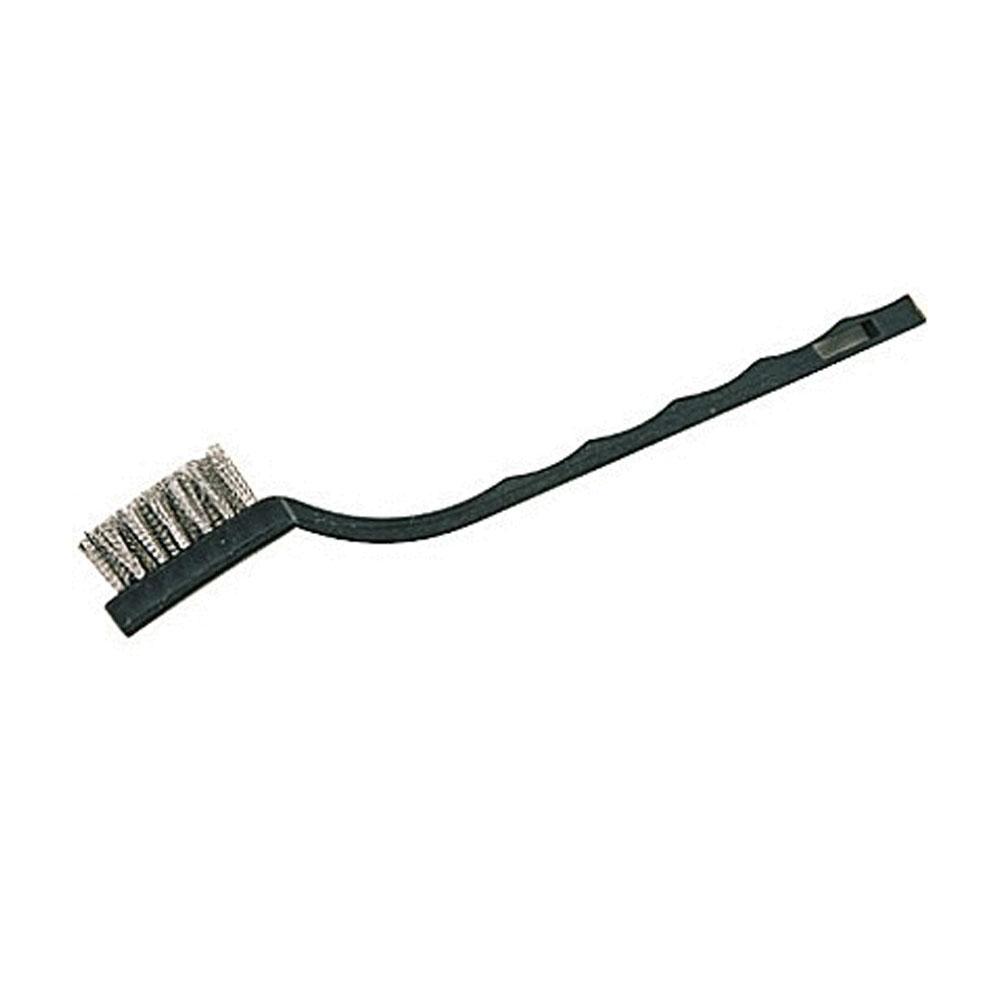
$9.95
You can see by its design that this brush has a wide distribution of bristles, ergonomic grips for your fingers, and steel construction. Its intended use is to brush coffee grinding burrs, but… You also have to brush your teeth, and by looks alone, this is a perfectly suitable brush! I’ll admit that I’m going a bit overboard with this example, but the point is, you would never use anything other than a toothbrush to brush your teeth and you shouldn’t use anything that isn’t a coffee grinder to grind your coffee. If your grinder is out of commission and you’re absolutely desperate, pre-ground coffee is always an option. The reverse holds true when it comes to using your grinder for unintended purposes. Coffee grinders are designed to grind objects with the size, texture, and density of roasted coffee beans. Using them to grind spices, or other substances can damage them and will certainly void your warranty.
When you brew coffee, invariably you are introducing water to ground coffee, and that water pulls all sorts of goodness from it. Water is the universal solvent and when heated to 200 or so degrees, it does a great job of extracting the sugars, oils, acids, fats, etc. from ground coffee. That said, you can’t just take coffee beans, throw some water on them and expect coffee to happen. By grinding coffee into smaller pieces, you increase the surface area for the water to come into contact with, making extraction easier. In many cases, water is dripped, poured, or pressed into the top of a bed or puck of coffee and flows through it.

Depending on the method, the flow of water is propelled by gravity or by a source of pressure (typically a pump). As the water is pushed downward, its path through the coffee is ultimately dictated by the resistance it encounters. The resistance is provided by the grounds themselves and by the type of filter being used. If you know anything about water, you’ll know that it likes to follow the path of least resistance, which means that any inconsistency in the grounds themselves can create pathways for the coffee to flow more easily through larger grounds or to become blocked by finer ones. This phenomenon is known as channeling, and it results in an imbalance in flavor because some of the grounds are in contact with the water for longer than others.
Conical and Flat Grinding Burrs
Keeping the above in mind, it’s important to note that burrs themselves are not a monolith and that in fact there are a wide variety of shapes, sizes, and materials used in designing burrs. One of the more hotly contested topics of discussion regarding burrs revolves around the benefits of using conical burrs as opposed to flat burrs, and vice versa. There is little in the way of scientific literature that can make a definitive case for the virtues of one type of burr vs another when it comes to which type results in a better flavor in your cup. I’d like to highlight Baratza as an example of a company who uses both types of burrs across a spectrum of products. Take for instance their Sette and Vario grinders:
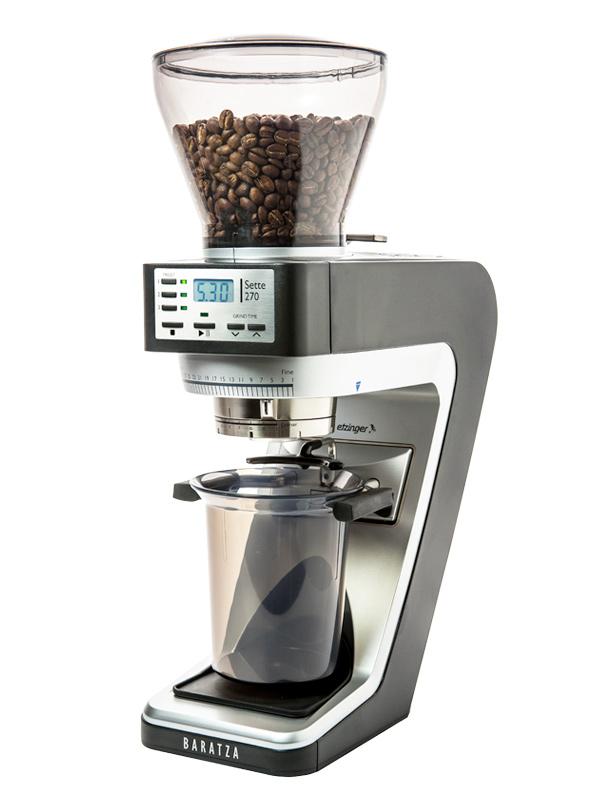
$579.00
Historically, both the Sette and Vario have been viewed as multi-purpose/all purpose grinders by the community at large. Despite these grinders both fitting into the same niche, one has conical burrs and the other has flat burrs. In our own conversations with Baratza we’ve explored the design philosophy behind several of their grinders, including the Sette and the choice to use conical burrs is really more of an organic destination than a conscious decision based on a belief that one type of burr would produce better tasting coffee.
Comparing the Sette and the Vario side-by-side they are very different grinders. The Vario being the older of the two comes from a more traditional age of grinder design, offering a range of stepped grinding settings that are suitable for both espresso and coffee. It comes with a specialized holder for portafilters, and a bin for ground coffee and grinds with a set of 55mm flat ceramic burrs. The Vario is dependable and conventional, it’s slower and a bit more consistent for drip grinding.
By contrast, the Sette was a fairly radical shift in grinder design. It uses a set of 40mm conical steel burrs that grind and dispense coffee at high speed, directly into a portafilter. The Sette was engineered in a way that addresses a growing interest in low retention and single-dosing grinders. Baratza themselves put the Sette slightly ahead of the Vario in terms of espresso grinding and slightly behind for coffee grinding. But we also can’t forget that Baratza also created an alternate set of burrs for the Sette in order to give customers access to a different range of grind.
The point of this comparison is to highlight that the performance and use case for these grinders was much more heavily influenced by how Baratza chose to engineer them than by their particular burr choice. The takeaway? Shop for features that you like, they’re much more meaningful in the long run.
Manual Coffee Grinders

For a multitude of reasons, there are people who prefer to grind their coffee by hand as opposed to using an electric grinder. If you’re one of those types of people, this section is for you. And no, this DOES NOT mean crushing your beans with a meat tenderizer or a rolling pin. There are, in fact, coffee grinders that are entirely hand powered and they are quite popular within certain circles. So, let’s get cracking. Or should I say, cranking?
Manual coffee grinders are fairly straightforward, the work of rotating the drive shaft to turn the burrs is transferred from an electric motor to you, the operator. Apart from that, the same basic principles of burr grinders apply with a set of burrs used to grind whole bean coffee. The key advantages of manual grinders is their relatively lower pricing and portability. When comparing manual grinders, stability and ease of use are more relevant than in electric grinders as factors like leverage and torque have a far greater impact when grinding by hand.
Coarse Ground Coffee
While much of our grinders catalog is comprised of espresso focused grinders, there is a vocal segment of our customers who want coarsely ground coffee for their French Press. For methods like French press, percolator, and to a lesser extent vacuum syphon, using very coarse grounds is necessary to prevent them from passing through the filter screen and into the rest of the carafe. That said, it doesn’t just stop at having a grinder that produces big chunks of coffee, you also want to avoid getting too many fines in your grind. Fines are basically coffee dust that get sprinkled in with your grounds. They can pass through filters more easily and can also lead to over extraction when brewing.
What is a French Press Grind?
When grinding coarse for French Press or a percolator, it’s not enough that the coffee is simply to zero in a bit more closely on what exactly a French Press grind needs to look like. Coffee grinds are quite small, to the point where it’s more efficient to measure them in microns (µ) because they’re so small as opposed to other types of measurements. To put it in perspective, 1 micron, 1µ is equal to 0.00003937008 inches. That may seem small, but ground coffee typically ranges between 200µ - 1,300µ, roughly 0.008 and 0.05 inches which isn’t quite as microscopic. French Press leans towards the much coarser side, around 1,300µ, and you want as many of the grinds to be about that size as possible.

From the perspective of brewing, fines also increase the surface area of the coffee that comes in contact with the water, and a higher concentration can lead to over extraction, meaning that less desirable tastes and flavors are pulled from your coffee. We want our French press coffee to be rich and not bitter, which leads us to a bit of a life hack. If a new grinder is out of the budget, here’s a quick hack. Use a sifter or a mesh screen. Load it up with your grinds and sift out the fines before you brew and see if you don’t notice a difference.
Now, for our recommendations! Having reviewed a number of grinders at various styles and price points, here are our recommendations for five grinders that can achieve that extra coarse French Press grind:
Top 5 French Press Grinders
The Bodum Bistro Burr Grinder
It’s only logical that Bodum would have a grinder on this list given their very popular French Presses. The Bistro is a bit less flexible than other grinders on this list, but makes up for it in affordability.
The Breville Smart Grinder Pro
The Smart Grinder Pro by Breville touts itself as an all purpose grinder. This is achieved via a detachable top burr that can be adjusted for different grinding ranges. At its coarsest configuration, the Smart Grinder Pro can handle French Press Grinding.
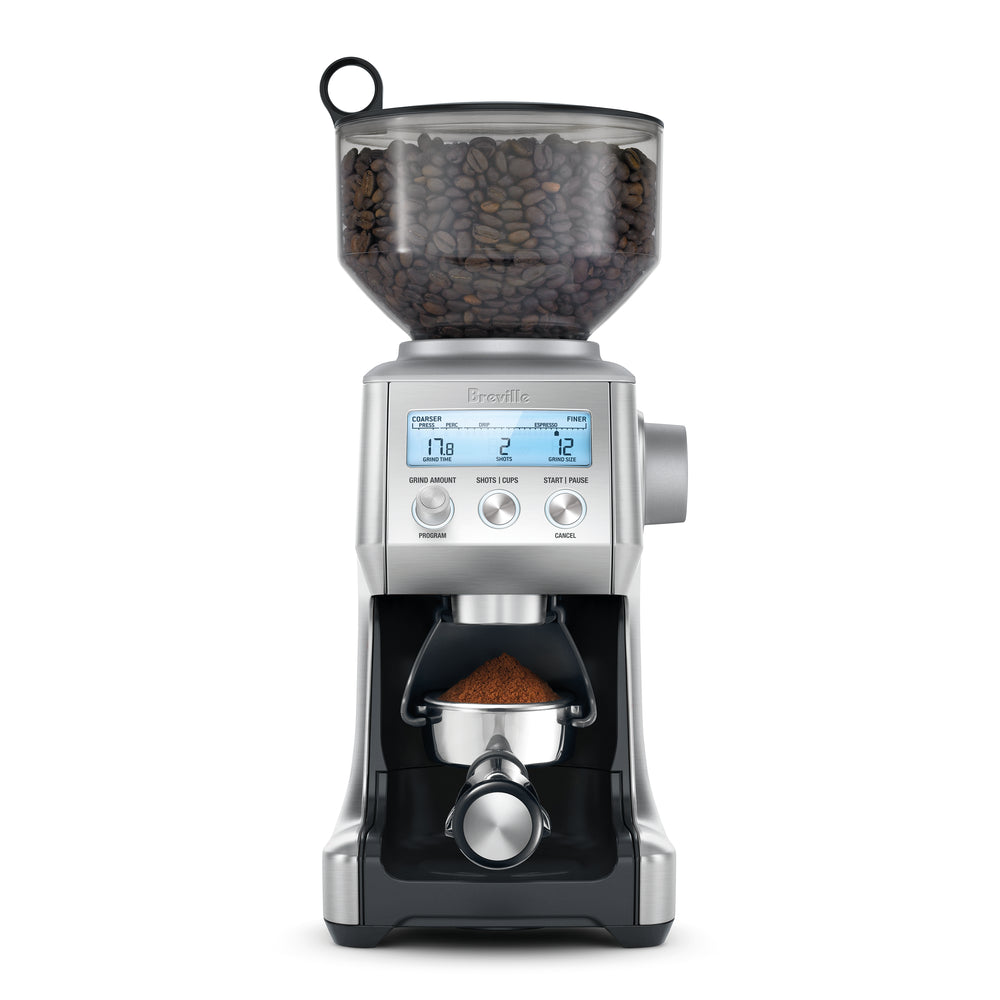
$229.99
The ROK Coffee Grinder
The ROK Coffee Grinder is an incredibly flexible grinder, with the option for stepless grind adjustment to help with dialing in. The ROK provides great leverage for easy grinding, and the conical burrs can achieve a coarse grind that’s perfect for a press.
The Baratza Virtuoso+
Taking the place of the original Baratza Virtuoso, the Virtuoso+ is one of two grinders that Baratza rates at 5/5 stars for its manual brewing performance, which of course includes French Press.

$287.99
The Baratza Forte BG
The Baratza Forte BG is Baratza’s most expensive product and their premium brew grinder at 5/5 for manual brewing. It uses the same flat steel burrs as their Vario W, but features an improved gearbox, aluminum casework, and a touch screen.

$1,299.99
Built-In Coffee Grinders
For convenience, super-automatic espresso machines and certain coffee makers feature built in coffee grinders that allow the machine to grind beans fresh prior to brewing. The flavor of freshly ground coffee is so much better than that of pre-ground, pod, or capsule coffee. But why is that? As a byproduct of roasting, coffee beans contain CO2 gas that is naturally released by the beans as they age. This is the reason why many commercial coffee roasters such as Lavazza install one-way valves on their coffee bags in order to allow the gas to escape and prevent the bag from rupturing. In addition to releasing CO2, aging also causes coffee to oxidize, which is a fancier way of saying that it starts to go stale.
When coffee is ground, it increases its surface area, meaning that it oxidizes much faster. Grinding also releases large amounts of CO2 from the beans right away, and at that point, you want to brew right away. This is why many pre-ground but not whole bean coffees are stored in a vacuum sealed tin and likewise why coffee pods and capsules are similarly vacuum sealed to prevent gas from escaping. Old, stale coffee will have little to no bloom when brewed as pour over, and as espresso, the crema will be thin and weak. Grinding fresh really is one of the best things you can do for your beans.

You may be thinking then that a built-in grinder is the way to go as far as brewing is concerned, and unfortunately it’s not quite that simple. As a general rule, the more convenient something is, the more it has to compromise in some regard. This is the case for both super-automatic espresso machines and coffee makers with built-in grinders. We’ve established that coffee grinders are a specific tool that are designed to grind roasted coffee for brewing. To that end, many manufacturers have thrown their hat into the ring to offer up unique designs and solutions to the challenge of grinding coffee. However, if you’re designing a product that both grinds and brews coffee, you have two entirely separate sets of variables to consider, and ultimately your product needs to be affordable enough to manufacture and sell.
As an exercise, let’s dream up an all-in-one coffee maker/grinder from Breville, combining their Smart Grinder Pro and their Precision Brewer. The Breville Smart Precision Pro Control.
The Breville BDC450BSS Precision Brewer
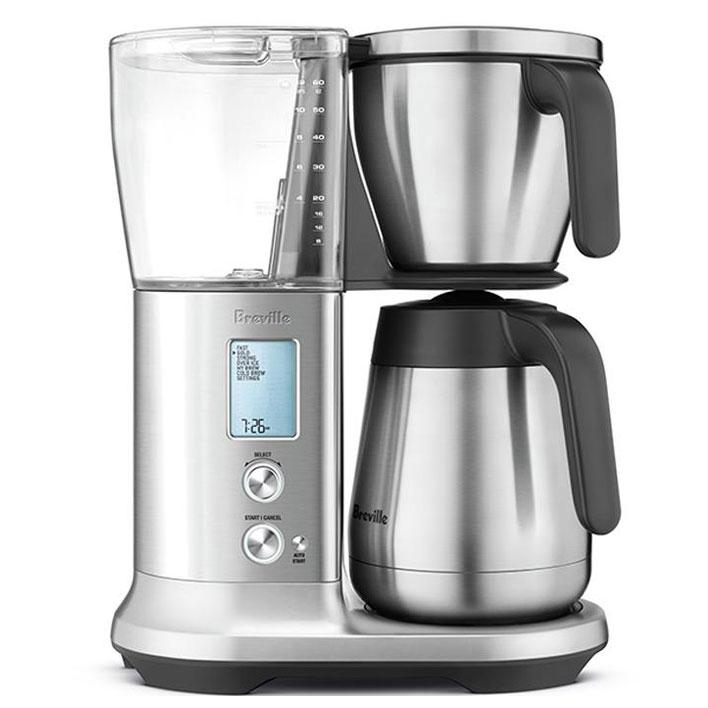
$329.99
Our hypothetical fusion of these two products would likely cost $499, and offer the grinding performance of the Smart Grinder Pro and the brewing performance of the Precision Brewer, but in reality, that’s not the case. Breville’s grind and brew coffee maker, the Grind Control does have a lot of features, but they’re not necessarily brewing features as much as they are convenience features. The Grind Control is geared toward making freshly ground and brewed coffee for various sizes of vessels, ranging from a travel mug to a full carafe. Unlike the Precision Brewer, its key features include programmable on and off time, and coffee strength adjustment.

Something else to keep in mind is that when your grinder is part of your coffee maker, if either half is out of commission, you’re dead in the water. With a separate grinder and coffee maker, you’re at least protected if one is on the fritz. If you’re someone who wants convenience and freshly ground coffee without having to own a grinder, here’s one more more in-depth look at another option, the Capresso CoffeeTEAM Pro Plus and a list of our coffee makers with built in grinders:
Top 5 Coffee Makers with Built-In Grinders
Cuisinart DGB-550 Grind & Brew Coffee Maker
“This is a nice coffee maker for the price. Brews coffee quick and keeps it hot. Also nice sleek design.” - Michael. E
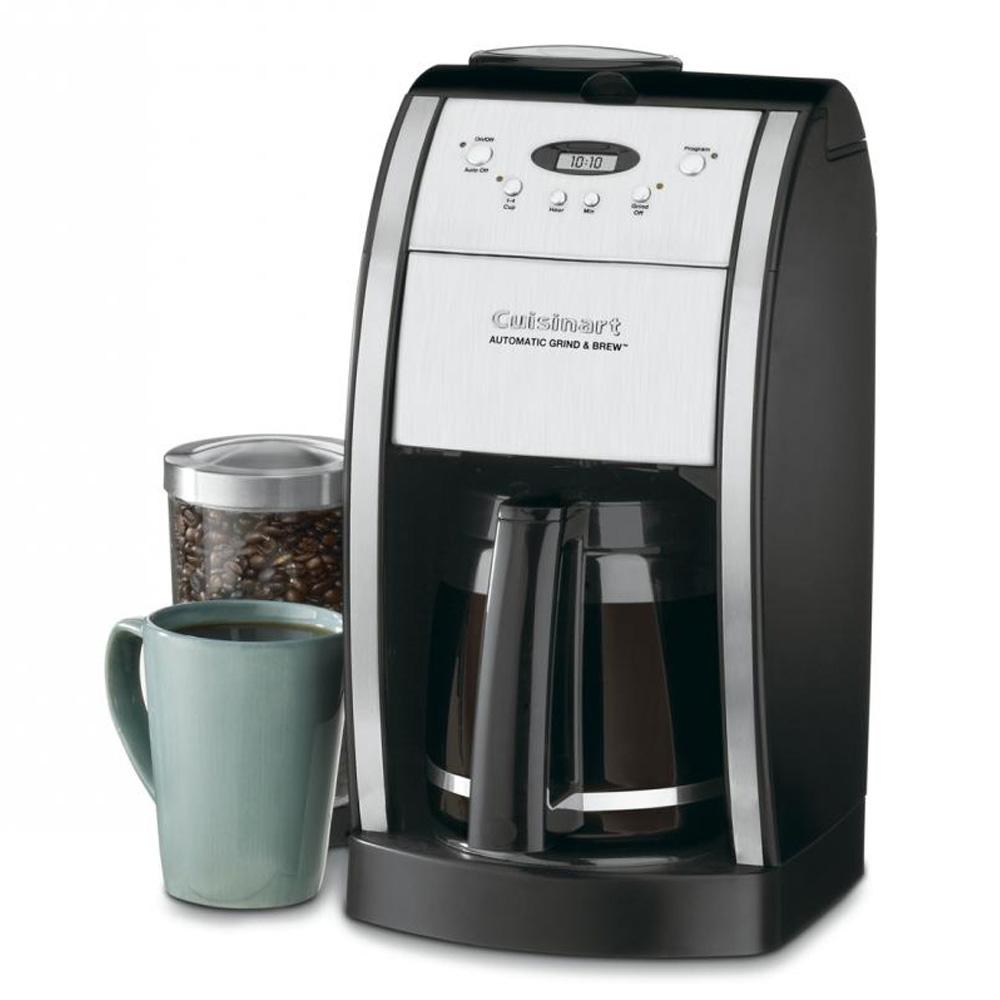
$136.99
Cuisinart DGB-700 Grind & Brew Auto
“We use this machine for our weekday "caffine fix". It's easy to use and easy to clean. The coffee taste is good--in the moderate range. It's also easy to set up.” - Ronald G.
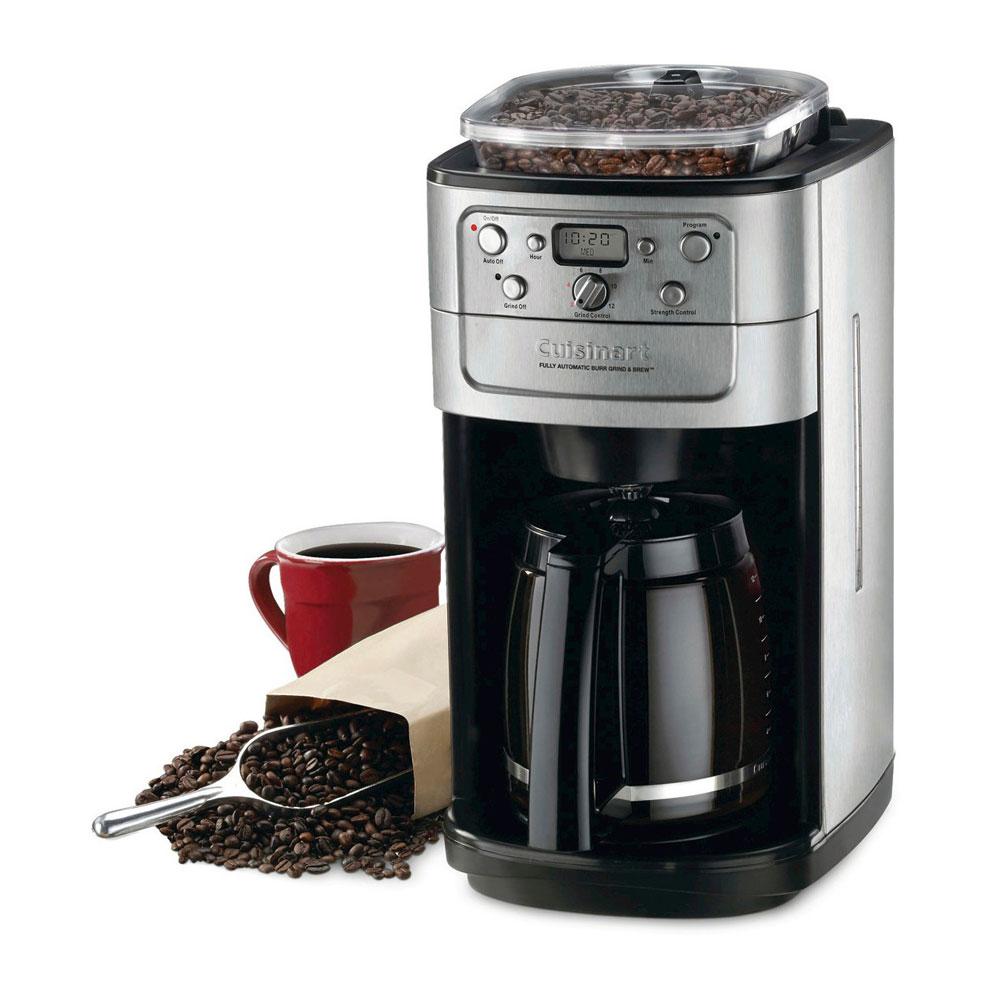
$230.00
Capresso CoffeeTeam GS
“My fiance and I have had this coffee maker for about two months now and LOVE IT!! Our friends want a cup of coffee everytime they visit! We would recommend this to everyone ! Enjoy!” - Duane H.
Capresso CoffeeTEAM Pro Plus Glass
“...This machine is wonderful, easy to use, clean and I wake up to fresh Read more about review stating I really hope I don't jinx the machine...coffee every morning in a good mood. What could be better..?” - Joyce
Breville BDC650BSS Grind Control
“Excellent coffee maker, so easy to use and maintain. Love the consistency, the fact the carafe keeps the coffee hot for quite a while and it is well made, so if like other Breville products I have owned, it will be around for a long time. I highly recommend this coffee maker.” - Bruce B.
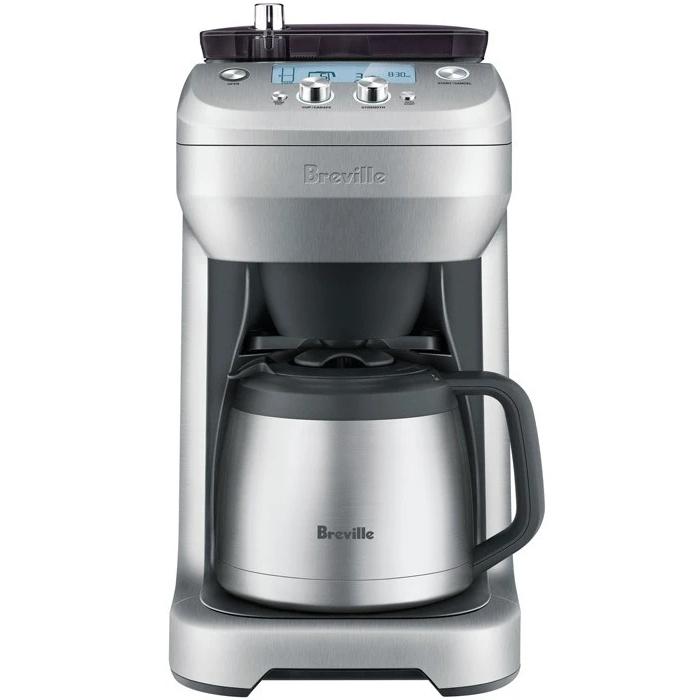
$364.99
Espresso Grinders

When it comes to our catalog espresso grinders comprise a large portion of our total offerings of coffee grinders. Espresso brewing is an intense process, with a number of important variables that determine success or failure when it comes to extraction. Of those variables, the size and consistency of your grind is one of the most important among them. Conventional wisdom suggests that you should allocate up to 50% of your budget toward the grinder you purchase, making it one of the most important decisions that you’ll make when it comes to selecting new equipment.
An interesting bit of trivia is that most grinders purchased in conjunction with prosumer espresso machines is that they are actually designed and manufactured for commercial environments. Companies like Ceado and Mazzer for instance produce equipment that is suitable for use in cafes, but that ultimately wind up in homes. Companies like Baratza who primarily produce grinders for home use are actually in the minority when it comes to grinder manufacturers. Taking that into account, let’s take a look at some of the characteristics of a quality espresso grinder.
Grind Adjustment
One of the things about espresso brewing is that it tends to exaggerate things. Flavors, flaws, you name it. With water being pressed through the coffee at high pressure, the stakes are higher when it comes to creating proper conditions for extraction. In a traditional commercial style portafilter basket, you have dozens of small holes that are distributed across the bottom that the espresso can flow through. The puck of espresso is not only the coffee that you’re brewing with, but it also serves as a source of back pressure to resist the flow of the incoming water. This interplay of water and grounds in a pressurized environment is how espresso is brewed, with the pump in your machine forcing the water downward through the coffee and ultimately in your cup.
Returning to the concept of channeling that we discussed earlier, water will flow through the past of least resistance, meaning that spots of more coarsely or finely ground coffee will impede the flow of water differently than the rest of the evenly sized grinds. In espresso machines, channeling is much more pronounced because the water is being pushed through the coffee as opposed to simply draining through via gravity. Channeling is most easily observed when using a bottomless portafilter which does not have spouts. When brewing with a bottomless portafilter, channeling can cause intense spurting of coffee from the basket that makes a mess and doesn’t taste very good.

Generally speaking, most people will probably brew with a spouted portafilter instead of a bottomless one which mitigates the messiness of channeling, but not its impact on brewing. That’s where a good espresso grinder becomes so important. Changes in age, humidity, temperature, and many other factors affect your espresso brewing. As a result, your grind will need to be adjusted to compensate for the changes in a process referred to as dialing in. By making your grind finer or coarser, it affects the flow of water and can increase or decrease the speed of your extraction. If you aim for a 1.5 - 2 oz shot within 25 - 30 seconds, you’ll need to be able to make those adjustments, with the number of adjustments and ease of adjustment being key features to consider when selecting a grinder.
Stepped Grinders

There are two primary modes of grind adjustment, stepped and stepless. The term “stepped” refers to the movement of the burrs while they are being adjusted. Steps are predetermined increments of space that burrs move that are typically demarcated on the frame of the grinder so you can tell what setting you are using. Stepped grinders are commonly produced by home grinder manufacturers like Baratza, Capresso, and De’Longhi and are generally much less expensive than their stepless commercial counterparts. Their lower price point is typically more a factor of their intended use for home grinding, and these sorts of features and materials used in their production.
When it comes to grinding performance and usability, stepped grinders have their advantages and disadvantages. Because there are a predetermined number of steps to adjust the burrs, stepped grinders have more limited variability compared to stepless grinders. What this means is that it can be tricky, or even impossible in some cases to set your grind to the precise spot where it needs to be for your best extraction. If you’re an existing owner of a stepped grinder you probably know the feeling of your perfect shot being stuck between settings. That doesn’t mean that stepped grinders can’t handle espresso, far from it. The takeaway is that if you’re looking to chase the perfect shot, the tool for the job will ultimately be a stepless grinder where you have infinite potential for grind adjustment.
An area where stepped grinders excel in comparison to their stepless counterparts is in multi-purpose use. With deliberate markings of each grind setting it’s easy to identify your exact grind setting for a particular coffee or brew method. This means that if you’re using your grinder for a variety of preparations, you can return to previous settings without having to guess. Stepless grinders by comparison are adjusted on a continuous scale of distance between the burrs and you will generally set them to a specific grinding range and not deviate from it. This leads to stepless grinders being better suited towards espresso grinding as opposed to multi-purpose grinding as the process of re-calibrating them from one setting to another is much more time consuming.
Stepless Grinders

The opposite of stepped grinders, stepless grinders feature an infinite number of grind settings and allow for a greater degree of precision for your grind adjustment. The burrs are simply adjusted to be closer together or further apart by turning them, similar to tightening a nut on a screw. The continuous range of adjustment and the ability for a set of burrs to make a full revolution while being dialed in make numeric grind settings relative and not as useful at defining a grind setting. Generally you’ll dial in your grinder to a range that is suitable for espresso brewing and only make minor changes once that range is achieved. It’s within these minor changes that you can make a meaningful impact on your extraction by subtly affecting the flow of water through the puck.
Returning to the concept of commercial style filter baskets and portafilters, the grinds themselves do the majority of the work when it comes to resisting the flow of incoming water. Due to their small size, and the additional pressure applied to them by tamping, they impede the flow of water. The tricky part lies in finding the correct balance in your extraction. If your grinds are too fine, closer to say a Turkish grind, the water will encounter far too much resistance, increasing your extraction time to an absurd level and resulting in bitter, over extracted espresso. If the grind is too coarse, the espresso will ultimately wind up under extracted, but what exactly do these terms mean?
Over and Under Extracted Coffee
As its name suggests, over extracted coffee is coffee that has been in contact with water for too long. Water is thirsty and it dissolves many substances. But, just because the water can pull various substances from our coffee, that doesn’t always mean that we want it to. Oftentimes you’ll hear the word “balanced” thrown around when it comes to discussing shots of espresso. If you’ve ever tried a “salami shot,” you’ll know that different parts of the extraction yield different characteristics. If I lost you at “salami shot,” it’s the process of splitting up a shot of espresso based on different steps of the extraction. You’ll find that based on the timing, you’ll taste a range of flavors, from sour, to bitter, to sweet. The interplay of these flavors create a balance that is the foundation of an enjoyable espresso. When you extract too many undesirable flavors in the case of over extraction, that balance is lost and the shot tastes bad as a result.
Under extracted coffee is on the other end of the spectrum, with water having flowed too quickly through the grounds and thus not extracting enough of the necessary flavors and compounds to form a balanced shot. It tends to be lighter, more acidic, and weaker in body as sugars and oils essential to evening out the shot are absent. Being able to make precise adjustments to your grind becomes more and more important if you are looking to develop your palate to detect more nuanced flavors and characteristics from your coffee. If that’s the case, a stepless grinder might just be the tool you need to take it to the next level. It’s important to note too that the concepts of over and under extracting coffee aren’t exclusive to espresso, but just about any method that involves water being dripped or poured through the grounds. Pour over brewing is especially sensitive to flow and extraction times in this regard as well.
Whether you choose a stepped or a stepless grinder, here are some factors to consider before you buy:
Top 5 Factors to Consider When Choosing an Espresso Grinder
1. Grind Retention
A topic that we haven’t talked about at length yet is grind retention. It’s a concept that refers to the total amount of coffee that is left behind in the grinder after grinding. So for example, if you put 18g of coffee into a grinder and only get 16.5g out when you’re done grinding, that means that your grinder retained 1.5g of coffee and that you’ll need to grind more in order to hit that 18g. If you are particularly concerned with brewing with the freshest coffee possible, you may want to consider a zero retention grinder.
2. Height
Many grinders that are purchased for prosumer espresso machines are actually designed for use in a commercial environment. In cafes and coffee shops, low hanging cabinets aren’t an issue so commercial grinders are typically taller than you might expect. As conventional wisdom suggests, measure twice, cut once. If you’re going to buy a grinder, make sure that you thoroughly inspect and measure the space where it’s going before you buy!
3. Multi-Purpose Use
If you intend to use your new grinder to grind for more than one type of brew method, you need to make sure that it is capable of doing so. All purpose grinders like the stepped grinders from Baratza will likely be your best bet when it comes to changing grind settings between pour over coarse to espresso fine coffee.
4. Upgrade Potential
We know all too well that upgraditis is a real problem among home espresso machine owners. If you are buying a grinder for your current espresso machine, it’s important to give some thought to whether or not you plan on upgrading your machine in the near future. If the answer is yes, you’ll want to give some more thought to the grinder you’re considering. What suits your needs now may not fit the bill down the line.
5. Ease of Use
While this may seem obvious, it’s important to fully evaluate a grinder’s user friendliness before making your decision. If you drink coffee every day, that means that you’ll likely be using your grinder every day as well. If that’s the case you’ll want to make sure that it’s convenient enough to fit into your routine without any disruption.

Dosing and Doserless Grinders
A final piece of the conversation on grinders is the distinction between dosing and doserless grinders. The name refers to the way that coffee is dispensed by the grinder into your portafilter. Dosing grinders are specifically designed to be used in conjunction with espresso machines, while doserless grinders can be used for both. The name refers to the term “dose” which refers to the amount of ground coffee that is being used to brew with. Dosing grinders are equipped with a mechanism called a “doser” that is used to dispense coffee. Dosers are chambers that coffee is ground into. They have an axle in the center with multiple spokes that divide the coffee up into chambers. A lever is used to rotate the axle, causing the coffee to be pushed out of the doser and into your portafilter.
Depending on the make and model of the espresso machine, dosers may or may not feature the ability to calibrate your dose. Some grinders from Ceado for instance offer this feature. In recent times, dosing grinders have fallen out of favor with home users due to the rise of better and better doserless grinders being made available. A key issue with dosing grinders among home baristas and coffee professionals is that the doser needs to be filled with coffee before it can properly dispense the correct amount when the lever is pulled. This can lead to over grinding in order to properly dispense coffee, and results in leftover, excess grounds remaining in the doser. Additionally, dosing grinders require additional manual work, forcing you to pull the lever to dispense coffee.
Doserless grinders have become the norm among home espresso brewers, primarily due to their ease of use and greater flexibility when compared to dosing grinders. As a result in the shift in popularity from one style to another, advances have been made in improving and innovating doserless grinders. A greater emphasis has been placed on flexibility of programming and operation with an interest in reduced grind retention and in single dosing, which is the act of grinding an exact amount of coffee for a single preparation and not leaving any beans in the hopper.
Super-Automatic Espresso Machine Grinders

In the same vein as grind and brew coffee makers, super-automatic espresso machines are also equipped with built-in grinders that freshly grind coffee to be compacted into a puck for espresso brewing. Similar to standalone grinders, super-autos also feature a variety of designs, materials, and adjustment settings that vary based on manufacturer and model.
When it comes to the grinders themselves, super-automatic grinders generally have 5 - 15 grind settings with either flat ceramic or conical steel burrs. Compared to grinding for a semi-automatic espresso machine where you can expect to make frequent, minor adjustments to your grind to ensure consistent extraction, super-autos are generally set and forget. The advantage of having more grind settings is still the same as with standalone grinders, meaning you can more precisely dial in your coffee for the best extraction possible. If you are using your machine to make long coffees, a coarse grind will benefit you, while a finer grind should be used for espresso.

Another factor that comes into play when people are considering grinders in super-automatic machines is the burr material. Similar to standalone grinders, burrs can be made of either ceramics or steel, with discussion surrounding either option echoing that of flat and conical burrs. In super-automatic espresso machines, grinding speed and noisiness are two attributes that influence a decision to pick one machine over another. Just like our discussion on flat vs. conical burrs, it’s more important to focus on specific design choices made by the manufacturer, such as the Gaggia Babila offering 15 grinding options, or the JURA series machines that feature the quieter Aroma G3 Grinder.
Gaggia Babila
“...I've had a number of superautomatics in the past and this is definitely the best. It is highly adjustable, makes great espresso, cappuccinos and coffee...” - Darryl E.
JURA E8 G2
“...The screen where you can select different drinks and the automatic milk frothier makes whipping up a specialty drink a breeze...” - Sheri C.
Can I Grind Coffee with a Blender?
This last section is a bit of fun, but it’s a question we’ve been asked and one that you may have wondered about yourself. The answer is of course “no,” because blenders blend things, they don’t grind them. The closest thing to a blender that grinds coffee is what’s known as a blade grinder. We’re discussing them here at the end of this guide because blade grinders have largely fallen out of style here at Whole Latte Love because they aren’t well suited for specialty coffee brewing.

Blade grinders use, you guessed it, rotating blades to chop coffee into bits that are small enough to brew with. The upside is that these grinders are typically quite small and quite cheap. The downside is that they offer minimal control over the size of your grind. All you can do is run them for a bit longer and hope for the best. There are a few on our site and if you’re in dire need of affordable, freshly chopped coffee, they may be your only option but we’re pretty sure you can do better.
In Conclusion
Grinding coffee, just like brewing coffee, is serious business. There’s a lot to consider when it comes to selecting a new grinder, looking to upgrade, or just thinking about how to brew better coffee in general. We hope that you’ve learned something new today, and if you’re hungry for more great coffee content, check out our other articles for more of the best on everything coffee.



